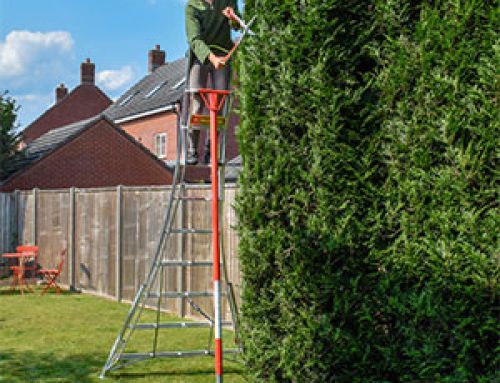National Apprenticeships Week took place in March, and the theme this year was “Ladder of Opportunityâ€. The ladder metaphor is used very often to describe progression – housing ladder, career ladder, league ladder for team sports – all these are paths to the top in different areas. Using this metaphor for the progression opportunities afforded by apprenticeships is no surprise, as it evokes a feeling of there being a clear career path ahead when someone starts an apprenticeship. For some potential apprentices though, there is more than a metaphor at work in the decision to learn a trade or a skill.
of Opportunityâ€. The ladder metaphor is used very often to describe progression – housing ladder, career ladder, league ladder for team sports – all these are paths to the top in different areas. Using this metaphor for the progression opportunities afforded by apprenticeships is no surprise, as it evokes a feeling of there being a clear career path ahead when someone starts an apprenticeship. For some potential apprentices though, there is more than a metaphor at work in the decision to learn a trade or a skill.
Trade apprenticeships typically involve training in the use of ladders in the workplace. Builders, roofers, decorators, electricians, plasterers and other construction and infrastructure trades, all use ladders for various tasks related to the job. As part of an apprenticeship, a person pursuing one of these trades will be trained either on the job, as part of the formal training programme or at college during the theory and practical learning that forms part of some apprenticeship schemes. Training schemes offered by large companies often have ladder safety as a module on that course, especially for those who will be required to use ladders and evaluate height access methods as part of their job. Smaller employers may run their own basic training or send an apprentice on a centrally run ladder safety course provided by an independent training centre.
There are some apprenticeships where ladders will not typically be used. Office and administrative apprenticeships, or those that in retail are not the jobs that come to mind immediately when you think of ladders, but in fact even the use of step ladders and kik-stools requires training before an apprentice or employee is allowed to use them. This is a health and safety requirement for any person that may need to use a ladder during the course of their work, and in offices where documents are archived and accessed, a step ladder will be required. The same goes for retail environments where stock is kept on shelves. Training in safe ladder use for these office-based professions may not take place as part of the formal apprenticeship programme, but instead will be provided by the employer, as part of their responsibility to ensure that all employees have received proper health and safety training for their job. These sessions are usually run twice a year or so, as it is uneconomic to provide training to each new starter individually. Instead, ladder safety courses are run when there are enough new people to warrant holding a session, and this training is usually provided by a third party rather than the employer themselves.
So, even if your apprenticeship does not require regular use of ladders, there is still a training requirement to fulfil in order to get the apprentice on to the ladder of opportunity.






Leave A Comment
You must be logged in to post a comment.